BLACKBERRY OFFERS TASTY AND HEALTHY FRUIT AND MEDICINAL LEAVES
NAME: BLACKBERRY (Rubus spp.)
Blackberry is a member of the rose family, which contains 110 genera and 3,000 species worldwide.
DESCRIPTION
The genus, Rubus, contains about 400 to 750 species worldwide. This genus includes such plants as the many species of blackberries, raspberries, thimbleberries and others.
Even non-botanists can usually identify the vine and fruit of this very common plant. The leaves are palmately divided (like a hand) into three, five or seven segments. The vines twine on the ground or over low hedges and are characterized by their thorns, which make it difficult to wade too deeply into any of the old, hedge-like stands.
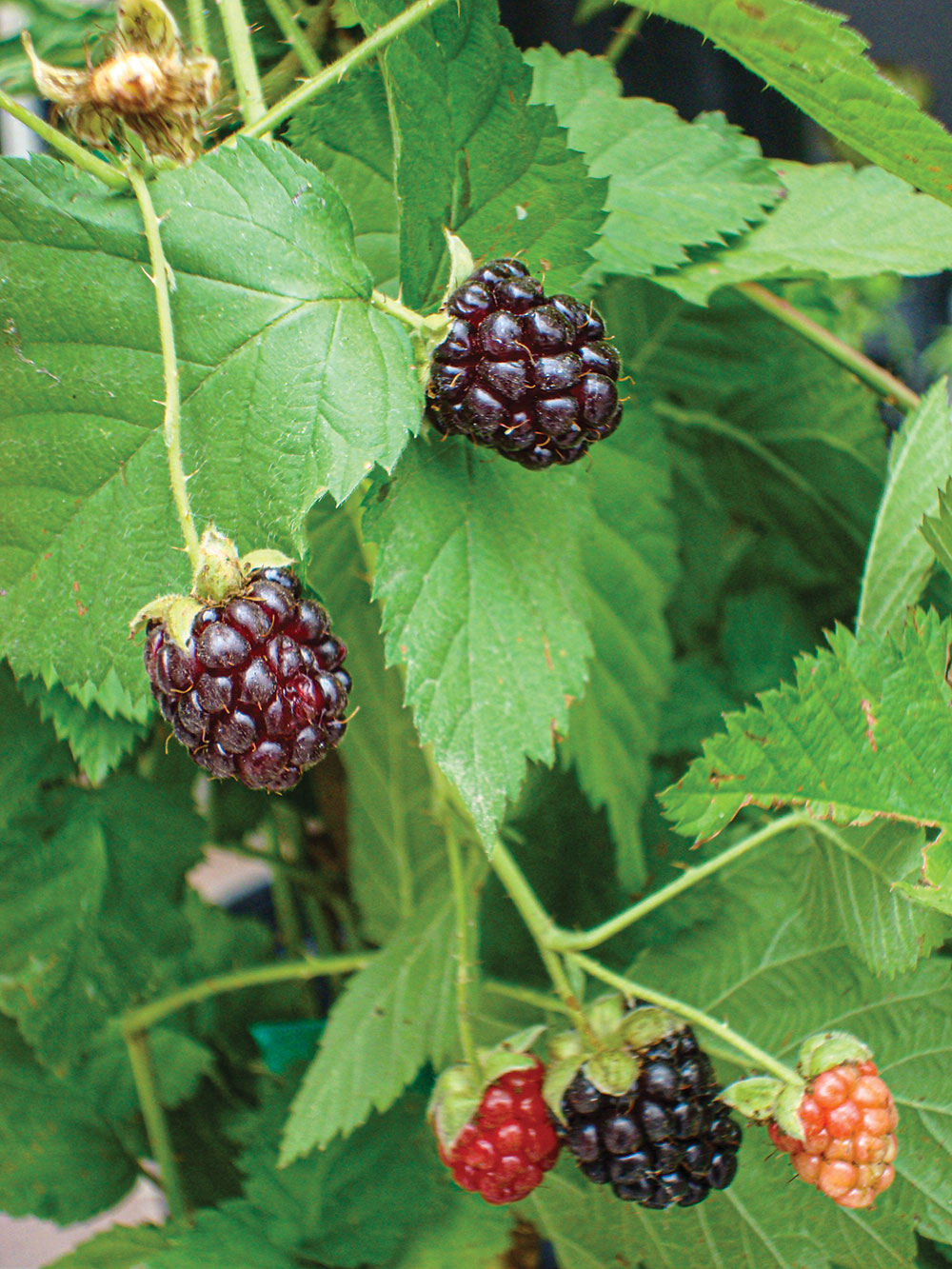
Its white, five-petaled flowers are followed by the aggregate fruits, which are a collection of sweet drupelets, with the fruit separating from the flower stalk to form a somewhat hollow, thimble-like shape. Most people instantly recognize this fruit by its characteristic shape, because they’ve seen it in the supermarket or in a backyard garden.
WHERE FOUND
Generally, blackberries are found in the wild in riparian and other areas where sufficient water is supplied. During one of my visits to Portland, Oregon, I was surprised that blackberries seemed to grow “everywhere,” both in suburban settings and in the wilderness. This vine and the related vines are found all throughout North America in nearly all elevations.
Blackberries are widespread, and because they’re so often planted in gardens and on farms, they’re widely dispersed throughout North America.
USES
Blackberries are easily recognized, and everyone who sees the ripe ones will venture to eat one. I’ve picked them deep in the mountains and along roadsides. The key is to avoid the thorns and make sure the berries aren’t immature and tart.
If the fruit is black, soft and easily picked, it’s ripe. You can eat it right away or pick a bunch and mash them for a topping for pancakes, biscuits or cake. Even better: Add them to vanilla ice cream. (Yes, we know that chocolate ice cream is better for you, but the flavor of raspberries clashes a bit with chocolate.)
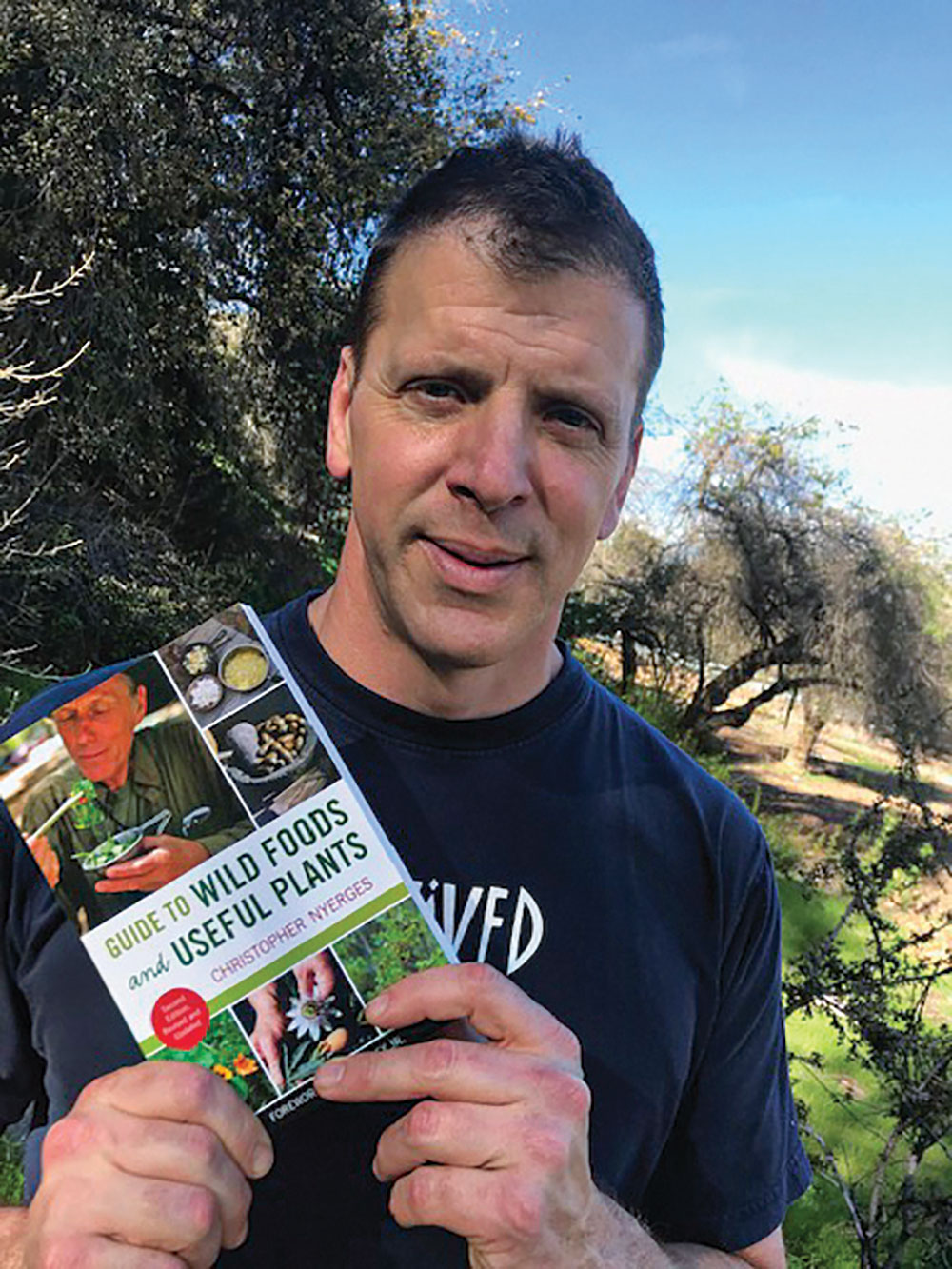
You could also make a conserve, a jam, jelly, pie filling or a juice. Blackberries are quite versatile. In addition, although I rarely have these ripe berries around long enough to dry them, they can be dried in any food dryer and will keep for quite a while. The dried fruits can then be eaten as is or reconstituted for juices or desserts.
PROCESSING
Simply collect the blackberries, rinse off any dirt and use them to make drinks, jellies, desserts and other dishes. To freeze them, just rinse and pat them dry and loosely fill your containers. For dried blackberries, rinse off any dirt and process them according to your food dryer’s instructions.
WHEN TO HARVEST/AVAILABILITY
Blackberry leaves can be harvested year-round but would be best for medicine if they’re harvested in the spring. The fruits mature in summer, often peaking around July.
MEDICINE/NUTRITION
An infusion of the leaves has long been used among Native Americans for diarrhea and childbirth pains.
Blackberries are known for their anti-cancer properties. Because they contain antioxidants, they’re known to destroy the free radicals that harm cells and can lead to cancer. They also help protect and strengthen immunity, which lowers the risk of cancer (see International Journal of Antimicrobial Agents, July 2009).
Because the plant is strongly astringent, an infusion of the leaf is used to relieve diarrhea. As a mouthwash, it’s used to strengthen spongy gums and ease mouth ulcers. Poultices or compresses have been used externally on wounds and bruises.
Wild European blackberry (Rubus fruticosus) plants are widespread and have been extensively used in herbal medicine. Tests show that European blackberry plants are effective in herbal medicine because of their effects of being antimicrobial, anti-dysentery, antidiabetic, antidiarrheal and also a good antioxidant. Blackberry leaves contain tannins, gallic acid, villosin and iron. The fruit contains vitamin C, niacin, pectin, sugars and anthocyanins.
ADVICE FOR GROWING
Blackberries and their kin are easily propagated from cuttings. When you find a vine that produces quality fruit, cut several stalks a foot or so long and about as thick as your little finger.
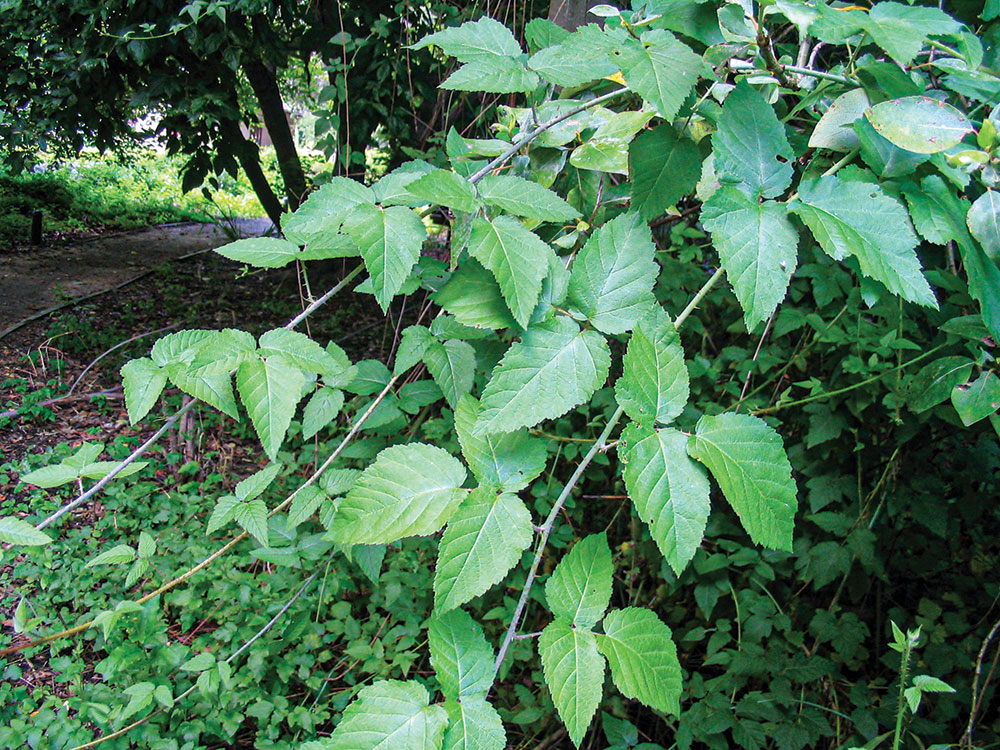
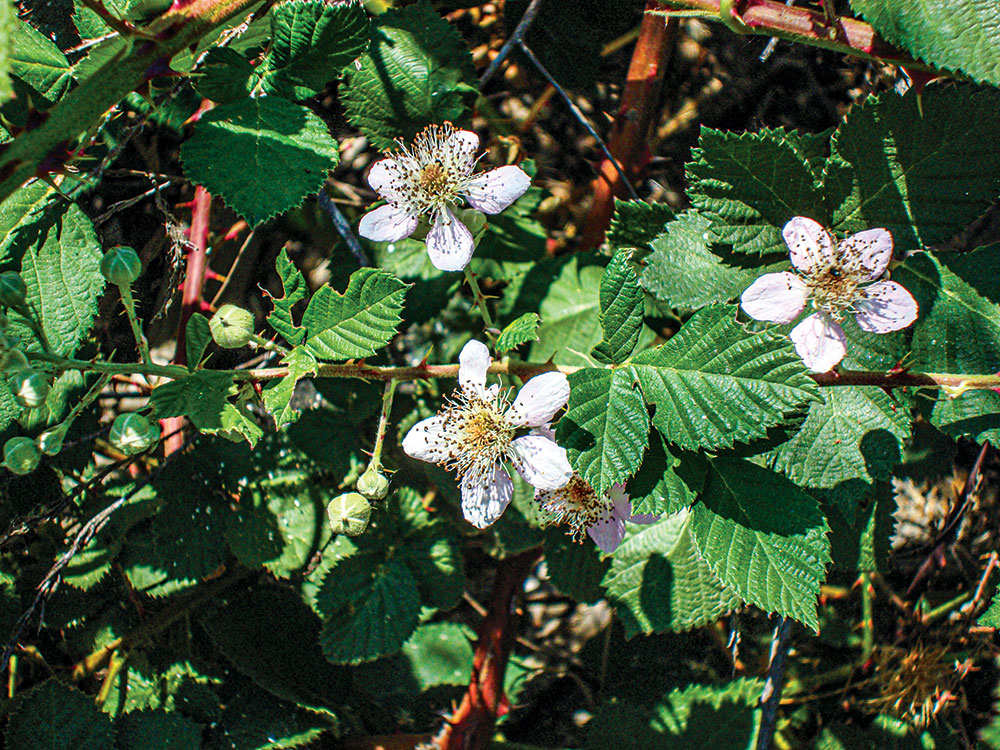
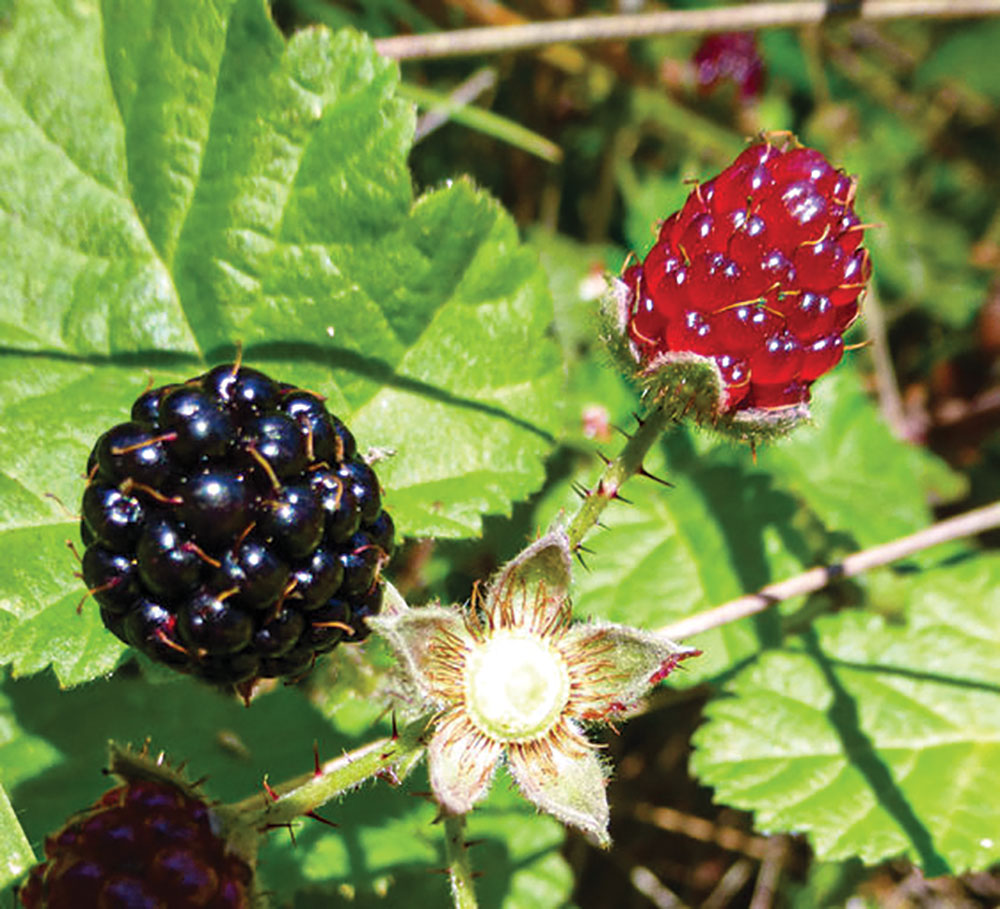
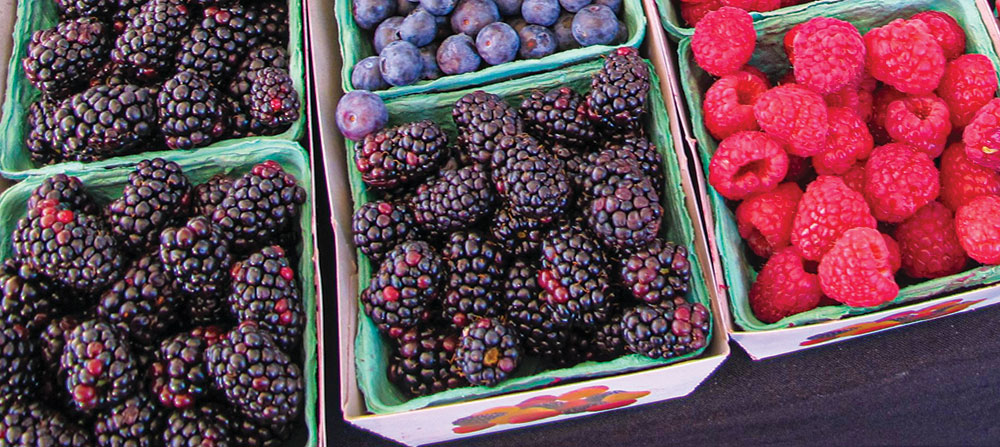
These will root readily in good soil and can also be rooted in vermiculite or diatomaceous earth. The plants thus propagated will be vegetative clones of the parent and will produce the same quality fruit as the parent plant.
CAUTIONS
The blackberry plant somewhat resembles poison oak, although poison oak lacks thorns. In addition, poison oak has leaves divided into only three leaflets, whereas blackberry leaves can be divided into three, five or seven.
RECIPE
WILD BLACKBERRY JAM
Mix together 8 cups of blackberries with a cup of apple juice and blend in one package of pectin. Bring everything to a boil and stir continually. Add 3 cups of sugar and stir for another minute or so. Then bottle the jam. If you choose to use a more healthful sugar than white sugar (such as maguey syrup or date sugar), experiment first to see how the mixture thickens.
(Note: This is the basic method for making jam from any fruit—wild or domestic.)
About AoG’s Plant Advisor
Christopher Nyerges has been teaching ethnobotany since 1974. He’s the author of Guide to Wild Foods and Useful Plants, Foraging Wild Edible Plants of North America and other books about the uses of wild plants. He can be reached at www.SchoolofSelf-Reliance.com.
A version of this article first appeared in the December 2021 issue of American Outdoor Guide Boundless.

